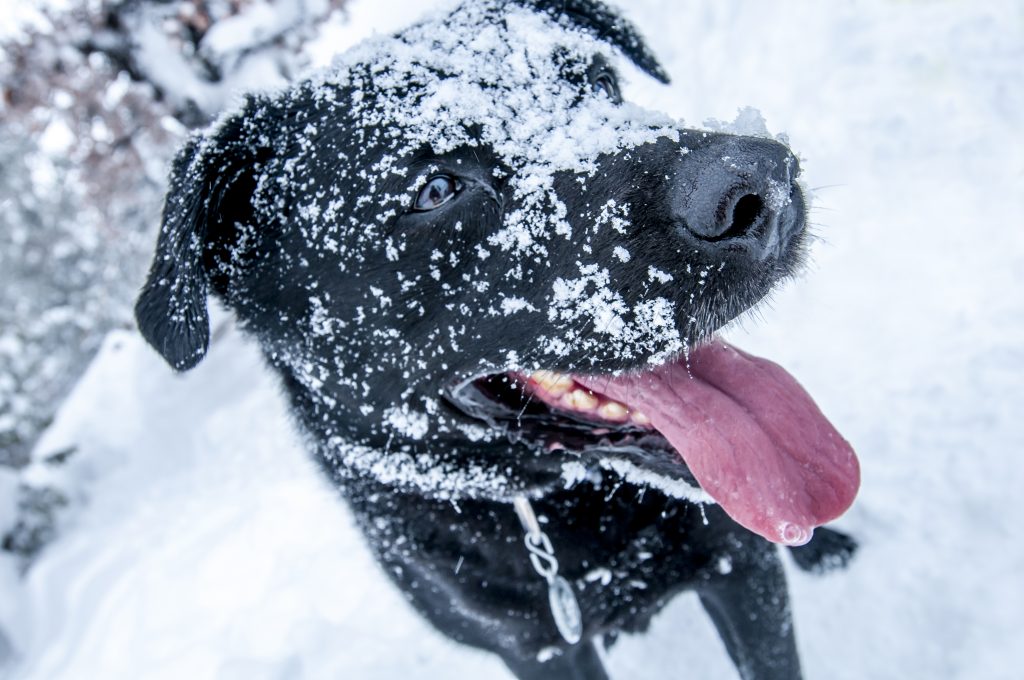Our Blog
Essential Elements: A Spotlight on the Veterinary Technician
 When you make an appointment for your pet here at Lone Tree Veterinary Medical Center, whether it’s for a wellness exam or an ongoing health issue, your goal is to see your veterinarian and have him or her examine your pet.
When you make an appointment for your pet here at Lone Tree Veterinary Medical Center, whether it’s for a wellness exam or an ongoing health issue, your goal is to see your veterinarian and have him or her examine your pet.
But, before your trusted veterinarian enters the examination room, there is someone else who has already greeted you, asked you questions about your pet and taken notes on your pet’s history, and also checked his or her vital signs. That person is a veterinary technician, and without him or her, no veterinary hospital or clinic could function effectively. Continue…
Battle of the Bulge: Pet Obesity
Winter Pet Safety Tips
 As fall turns to winter and temperatures start to drop, let’s revisit the essential winter pet safety tips. Keeping your pets safe during the icy months is crucial for their comfort, health, and overall well-being.
As fall turns to winter and temperatures start to drop, let’s revisit the essential winter pet safety tips. Keeping your pets safe during the icy months is crucial for their comfort, health, and overall well-being.
Continue…
My Pet Ate What? GI Obstruction in Pets
 Every pet owner knows how much pets enjoy food. Unfortunately, sometimes this love of chewing and swallowing can get our pets into trouble, particularly when they ingest something inedible causing a GI obstruction.
Every pet owner knows how much pets enjoy food. Unfortunately, sometimes this love of chewing and swallowing can get our pets into trouble, particularly when they ingest something inedible causing a GI obstruction.
In many cases, something a dog or cat ate will pass through the digestive tract with little to no trouble, but this is not always true. Any object can become lodged in a pet’s gastrointestinal (GI) tract (esophagus, stomach, or intestine), creating problems at any point along the way, including, the destruction of the area of the intestines where the foreign material is lodged. Continue…
Tularemia Is Called “Rabbit Fever” For a Reason

What Is Tularemia?
Tularemia, also known as rabbit fever, is an infectious disease caused by the bacterium Francisella tularensis.
Tularemia can also be contracted by inhaling airborne bacteria, eating an infected rabbit, drinking water or food contaminated by an infected animal, or contact with contaminated grass or soil.
What Causes Tularemia?
The bacterium causing Tularemia is Francisella tularensis, and is found worldwide in a variety of wild animals, birds and insects. The most common carriers, however, are rabbits and rodents. Continue…
Oh Sugar, Sugar: Diabetes in Pets
 Diabetes is one of the leading causes of death among people in the United States, and our pets aren’t far behind in falling victim to this disease. Studies show that diabetes now affects a whopping 1 in 50 dogs and cats, and doesn’t show any signs of slowing down.
Diabetes is one of the leading causes of death among people in the United States, and our pets aren’t far behind in falling victim to this disease. Studies show that diabetes now affects a whopping 1 in 50 dogs and cats, and doesn’t show any signs of slowing down.
Because diabetes in pets is more common than most people realize, combating this disease requires education and diligence on the part of responsible pet owners. Continue…
Rabies and Pets: Know the Enemy
 Most people know that wild animals can carry rabies, but many of us don’t think it’s something that can affect our pets or us. Unfortunately, the reality of rabies is closer to home than many of us realize. The disease is present in every state (except Hawaii) and kills hundreds of pets, as well as a few humans, each year.
Most people know that wild animals can carry rabies, but many of us don’t think it’s something that can affect our pets or us. Unfortunately, the reality of rabies is closer to home than many of us realize. The disease is present in every state (except Hawaii) and kills hundreds of pets, as well as a few humans, each year.
Understanding the link between rabies and pets is key in protecting your family, both two-legged and four, from this devastating illness. Continue…
Tummy in Knots? Recognizing and Preventing Bloat in Dogs
 Few conditions can kill a dog as quickly as bloat. Although many pet owners are unaware of it, bloat in dogs is one of the most serious, and potentially deadly, pet emergencies. Understanding the signs of bloat, as well as your emergency options, are crucial in protecting your dog from this dangerous affliction.
Few conditions can kill a dog as quickly as bloat. Although many pet owners are unaware of it, bloat in dogs is one of the most serious, and potentially deadly, pet emergencies. Understanding the signs of bloat, as well as your emergency options, are crucial in protecting your dog from this dangerous affliction.
Understanding Bloat in Dogs
Bloat, also known as gastric dilation volvulus (GDV), occurs when gas and fluid cause the stomach to distend. In some dogs, this distention can cause the stomach to twist along its axis (also called torsion), cutting itself off from the esophagus and duodenum. Continue…
Plants And Pets: What You Need To Know
 Pet owners know how curious their pets are and how much they love to sniff, lick, and nibble on just about everything they come across. Unfortunately, plants fall into this category and many pets will go to great lengths to take a bite of greenery whenever they can get away with it. This curiosity can, however, lead to big trouble, as many of the plants commonly found in and around our homes are toxic to our pets.
Pet owners know how curious their pets are and how much they love to sniff, lick, and nibble on just about everything they come across. Unfortunately, plants fall into this category and many pets will go to great lengths to take a bite of greenery whenever they can get away with it. This curiosity can, however, lead to big trouble, as many of the plants commonly found in and around our homes are toxic to our pets.
Because plants and pets often don’t mix, it’s important for pet owners to be educated on which plants pose a danger and how to protect their pets from falling victim to an accidental poisoning. Continue…
Plague In Pets: What You Need To Know
 It’s not likely that contracting the plague is high on your list of concerns. When most of us think of plague, we think of the disease that spread throughout Europe in the Middle Ages, killing one-third of the population; not an illness that we may actually have the potential of contracting in this day and age.
It’s not likely that contracting the plague is high on your list of concerns. When most of us think of plague, we think of the disease that spread throughout Europe in the Middle Ages, killing one-third of the population; not an illness that we may actually have the potential of contracting in this day and age.
Although it is rare, animals and people can and do still contract plague. According to the CDC, most human cases in the United States occur within locations in Idaho, New Mexico, Arizona, Colorado, California, Oregon, and Nevada. About eight cases of plague in humans are reported each year. Continue…




